About 25 people turned out for a walk at hidden gem, and disk golf course, Deer Lakes Park. This walk is held in June each year and is named in memory of Dorothy Fornof. Dorothy Fornof (1922 – 2006), a founding member of the WPMC, received the WPMC Special Service Award in 2003 for her dedication as a Club Mycologist, Mushroom Display Chairperson, her expertise in mushroom identification, and willingness to share that vast knowledge with all Club members. Dorothy led many mushroom walks at Deer Lakes Park and she impressed many as a woman with a profound knowledge of not only the fungi discovered on walks, but also the birds on sighting and by their songs, and practically every plant. She had a keen interest in all nature. When asked about how she could remember all the names and she said it took many years of hard work of learning and remembering. (A special thanks to Valerie Baker for her remembrance of Dorothy).
In late June the fungal diversity really picks up as there are still frequent rains as well as warmer days. Black trumpet season has been going for a couple of weeks and we normally find some of the the early season Chanterelles. This year was no exception with a wide range of species collected and identified. Of particular note were the 6 different chanterelle (Cantharellus and Craterellus) species found in the fairly small region of the park that we explored. There were tiny Cantharellus minor, beautiful Craterellus ignicolor which develop a small hole in the center of the cap and less brightly colored Cantharellus appalachiensis (Appalachian Chanterelle). We observed a lot of Galiella rufa (Hairy Rubber Cup) on the forest floor which should maybe be renamed peanut butter cups due to the beige color of the inner cup. There were also a lot of brood VIII cicada bodies around the trees and a few live ones. Some of the live ones were missing abdomens completely and some of the dead ones were covered in fungus, probably a Metarhizium sp. or a Beauveria sp., we are currently working on confirmation. Identification wrapped up promptly at 1pm as a thunderstorm rolled in and heavy rain started.
Species list entered by Richard Jacob. Species identified by Jack Baker, Richard Jacob, Adam Haritan, John Stuart and La Monte Yarroll. A number of species were identified after the walk by Adam and Richard along with help from various iNaturalist members.
List of species found on the walk at Dorothy Fornof Walk – Deer Lakes Park:
[icon style=”camera”] Aleuria aurantia (Orange Peel Fungus),
[icon style=”camera”] Allodus podophylli (Mayapple Rust),
[icon style=”camera”] Amanita amerifulva (American Orange-Brown Ringless Amanita),
[icon style=”camera”] Amanita amerirubescens (Blusher),
[icon style=”camera”] Amanita brunnescens (Cleft-foot Amanita),
[icon style=”camera”] Amanita brunnescens var. pallida (Cream Colored Cleft-foot Amanita),
[icon style=”camera”] Amanita citrina var citrina (),
[icon style=”camera”] Amanita flavoconia (Yellow Patches),
[icon style=”camera”] Amanita flavorubens (),
[icon style=”camera”] Amanita vaginata var. vaginata (Grisette),
[icon style=”camera”] Aureoboletus innixus (Clustered Brown Bolete),
[icon style=”camera”] Aureoboletus roxanae (),
[icon style=”camera”] Boletus longicurvipes (),
[icon style=”camera”] Boletus subvelutipes (Red-Mouth Bolete),
[icon style=”camera”] Baorangia bicolor (),
[icon style=”camera”] Bulgaria inquinans (Black Jelly Drops),
[icon style=”camera”] Clavaria fumosa (),
[icon style=”camera”] Cantharellus appalachiensis (Appalachian Chanterelle),
[icon style=”camera”] Cantharellus lateritius (Smooth chanterelle),
[icon style=”camera”] Cantharellus minor (Small Chanterelle),
[icon style=”camera”] Cantharellus tenuithrix (American Common Chanterelle; American Golden Chanterelle),
[icon style=”camera”] Ceratiomyxa fruticulosa (Coral Slime),
[icon style=”camera”] Cortinarius distans (),
[icon style=”camera”] Cortinarius iodes (Iodine Cort / Viscid Violet Cort),
[icon style=”camera”] Craterellus fallax (Black Trumpet),
[icon style=”camera”] Craterellus ignicolor (Flame-colored Chanterelle),
[icon style=”camera”] Crepidotus applanatus (Flat Crep),
[icon style=”camera”] Crucibulum laeve (White-egg Bird’s-nest Fungus),
[icon style=”camera”] Daedalea quercina (Thick-maze Oak Polypore),
[icon style=”camera”] Fomitopsis spraguei (),
[icon style=”camera”] Fuligo septica (Scrambled-egg Slime; Dog Vomit Slime),
[icon style=”camera”] Galiella rufa (Hairy Rubber Cup),
[icon style=”camera”] Ganoderma applanatum (Artist’s Conk),
[icon style=”camera”] Gymnopus dichrous (),
[icon style=”camera”] Helvella macropus (),
[icon style=”camera”] Hydnellum scrobiculatum (),
[icon style=”camera”] Hydnochaete olivaceus (),
[icon style=”camera”] Hypomyces chrysospermus (),
[icon style=”camera”] Hypomyces luteovirens (Yellow-green Russula Mold),
[icon style=”camera”] Hypoxylon fragiforme (Red Cushion Fungi),
[icon style=”camera”] Inocybe rimosa (Straw-colored Fiber-head),
[icon style=”camera”] Inocybe tahquamenonensis (),
[icon style=”camera”] Laccaria laccata (),
[icon style=”camera”] Lactarius lignyotus (),
[icon style=”camera”] Lactarius oculatus (),
[icon style=”camera”] Lactarius quietus var incanus (),
[icon style=”camera”] Lactifluus volemus (Fishy Milkcap),
[icon style=”camera”] Leccinum albellum (),
[icon style=”camera”] Leotia lubrica (Yellow Jelly Babies),
[icon style=”camera”] Lycogala epidendrum (Wolf’s Milk Slime),
[icon style=”camera”] Marasmius opacus (),
[icon style=”camera”] Marasmius sullivantii (),
[icon style=”camera”] Massospora cicadina (Flying salt shaker of death),
[icon style=”camera”] Megacollybia rodmani (Platterful Mushroom),
[icon style=”camera”] Otidea onotica (Donkey ear),
[icon style=”camera”] Panellus stipticus (Luminescent Panellus, bitter oyster),
[icon style=”camera”] Psathyrella delineata (),
[icon style=”camera”] Phellinus gilvus (Mustard Yellow polypore),
[icon style=”camera”] Phylloporus rhodoxanthus (Gilled Bolete),
[icon style=”camera”] Pleurotus dryinus (),
[icon style=”camera”] Pleurotus pulmonarius (Summer Oyster),
[icon style=”camera”] Polyporus varius (),
[icon style=”camera”] Porphyrellus sordidus (),
[icon style=”camera”] Resupinatus applicatus (Black Jelly Oyster),
[icon style=”camera”] Russula aeruginea (),
[icon style=”camera”] Russula grata (Almond scented Russula),
[icon style=”camera”] Russula mariae (Purple-bloom Russula),
[icon style=”camera”] Russula variata (),
[icon style=”camera”] Russula vinacea (),
[icon style=”camera”] Schizophyllum commune (Split Gill),
[icon style=”camera”] Scutellinia scutellata (Reddish Eyelash Cup),
[icon style=”camera”] Sebacina schweinitzii (Jellied False Coral),
[icon style=”camera”] Stereum complicatum (),
[icon style=”camera”] Stereum ostrea (False Turkey-tail),
[icon style=”camera”] Suillus granulatus (),
[icon style=”camera”] Tolypocladium ophioglossoides (Goldenthread cordyceps),
[icon style=”camera”] Tremella foliacea (Jelly Leaf),
[icon style=”camera”] Tremella mesenterica (Witches’ Butter),
[icon style=”camera”] Trichaptum biforme (Violet Toothed-Polypore),
[icon style=”camera”] Tubifera ferruginosa (Raspberry slime mold),
[icon style=”camera”] Tyromyces chioneus (White Cheese Polypore),
[icon style=”camera”] Xanthoconium purpureum (),
[icon style=”camera”] Xeromphalina kauffmanii (),
[icon style=”camera”] Xerula furfuracea (Rooted Collybia),
[icon style=”camera”] Xylaria cubensis (),
[icon style=”camera”] Xylaria polymorpha (Dead Man’s Fingers)
Species not currently on clubs life list:
[icon style=”camera”] Elaphomyces verruculosus (Deer truffle, False truffle) new name for Elaphomyces granulatus,
[icon style=”camera”] Lamproderma nigrescens (Shiny Lollypop) a new slime mold find for the club,
[icon style=”camera”] Phaeotremella frondosa (Jelly Leaf) new name for Tremella foliacea,
We also found Hormomyces aurantiacus the anamorph stage, the asexual reproductive stage, of Tremella mesenterica. This was reported as Tremella mesenterica in the list.
Pictures by Richard Jacob:
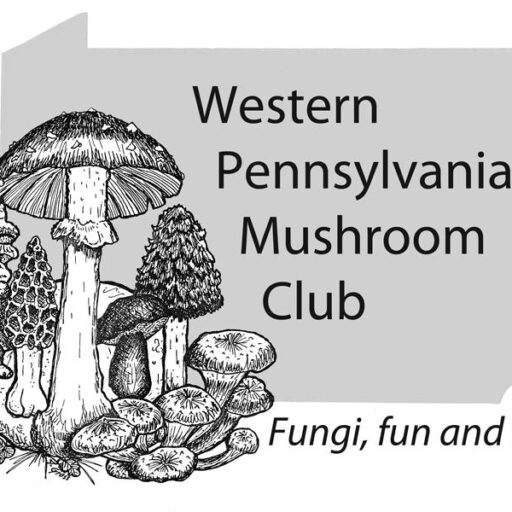
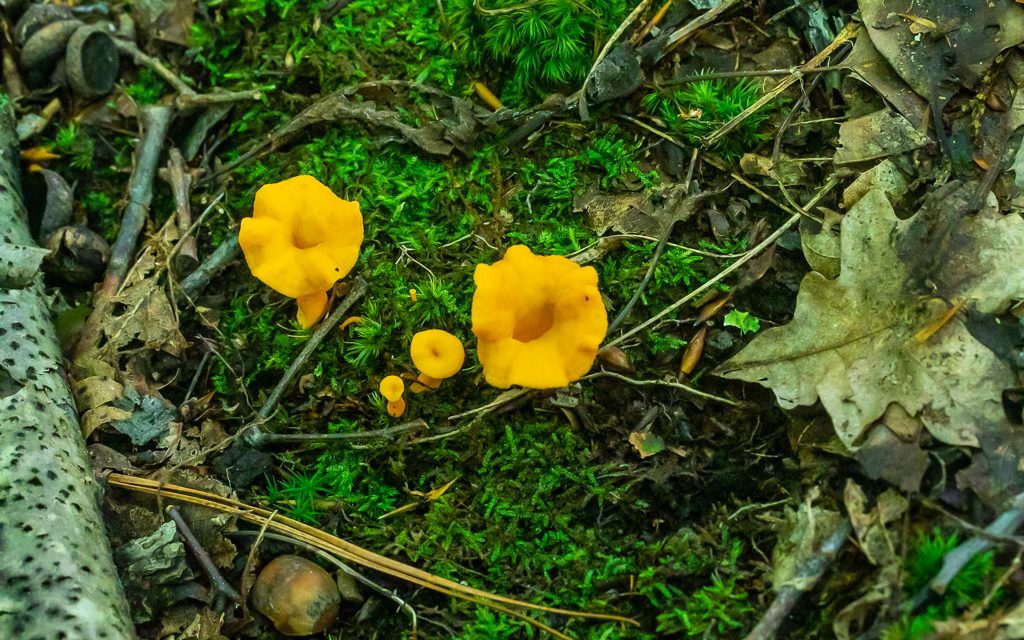




































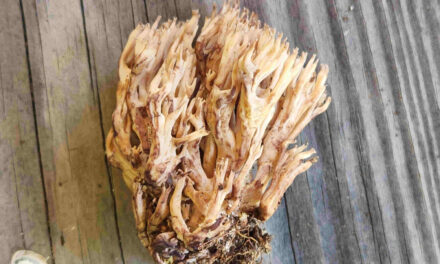
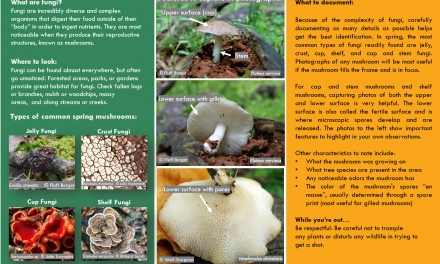
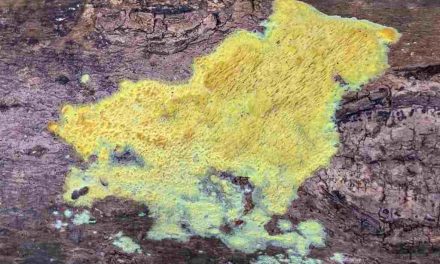
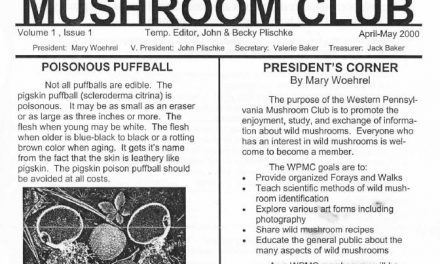

Recent Comments